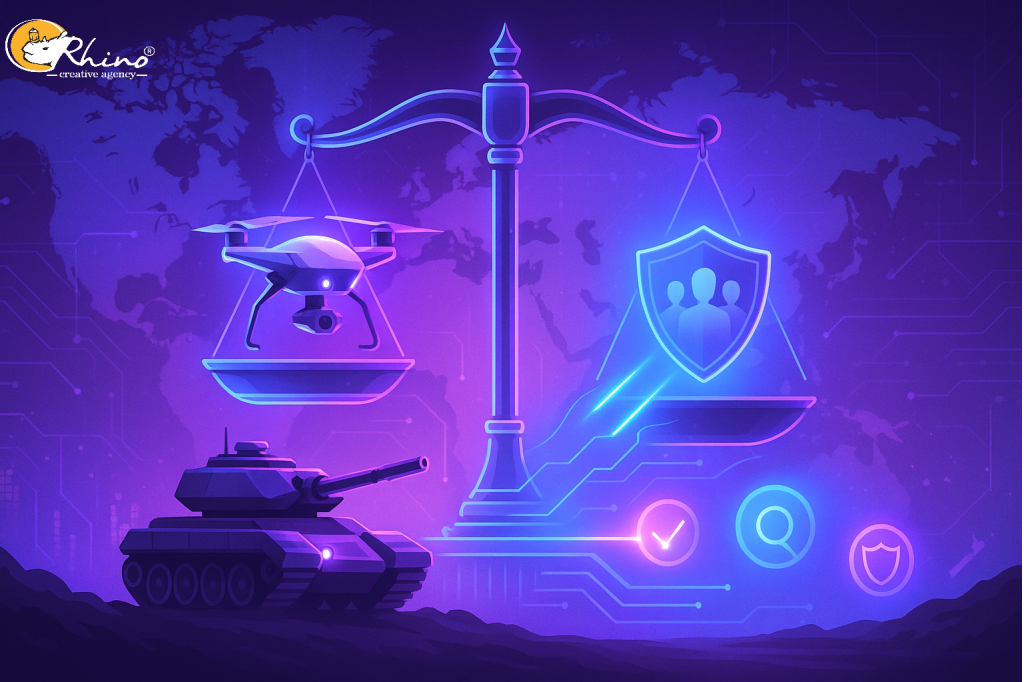AI in the Military: Legal Framework
Artificial intelligence (AI) is transforming modern warfare, reshaping how nations prepare, defend, and project power. From autonomous drones and predictive logistics to cyber defense systems and battlefield analytics, AI offers significant advantages in speed, precision, and adaptability. However, its military applications also raise profound legal, ethical, and humanitarian concerns. As states and international organizations grapple with these challenges, the legal framework governing AI in the military remains a contested and evolving domain.
International Humanitarian Law (IHL) as the Foundation
The cornerstone of the legal framework for AI in armed conflict is International Humanitarian Law (IHL), often referred to as the law of armed conflict. IHL seeks to balance military necessity with humanitarian considerations. The key principles include:
- Distinction – Parties to a conflict must distinguish between combatants and civilians. Fully autonomous weapons raise doubts about whether machines can reliably make such judgments.
- Proportionality – Attacks should not cause excessive civilian harm in relation to anticipated military advantage. AI-driven systems must be evaluated to ensure compliance with this principle.
- Precaution – States are obligated to take all feasible precautions to minimize civilian harm, which includes ensuring AI systems are tested, monitored, and supervised.
These principles apply to all weapons, including those with AI components. However, the novelty of machine learning—its unpredictability, opacity, and capacity to evolve—creates legal gray areas.
The Role of International Agreements
Currently, no treaty specifically regulates AI in the military, but existing arms control frameworks provide analogies. The Convention on Certain Conventional Weapons (CCW) has been the main forum for discussions about lethal autonomous weapons systems (LAWS). While several states and civil society groups advocate for a binding treaty banning fully autonomous weapons, others argue that existing IHL is sufficient. This divergence has prevented consensus, leaving regulation largely dependent on voluntary national policies.
National Legal and Policy Frameworks
Different countries approach AI in the military through their domestic legal systems and defense strategies. For instance:
- United States has adopted the Department of Defense Directive 3000.09, which requires “meaningful human control” over autonomous weapons.
- European Union member states emphasize human oversight and accountability, aligning with broader EU AI regulation.
- China and Russia have expressed interest in developing advanced AI-enabled systems but have offered limited transparency about legal safeguards.
These divergent approaches risk creating regulatory asymmetry, where some nations impose strict oversight while others pursue rapid, less restricted AI militarization.
Accountability and Responsibility
One of the central legal questions is accountability. If an AI system commits a violation of IHL—such as mistakenly targeting civilians—who bears responsibility? Possible candidates include programmers, military commanders, or the state itself. Current legal doctrine emphasizes state responsibility, but the diffusion of agency in AI systems complicates enforcement. Establishing clear lines of accountability remains a pressing challenge for both domestic and international law.
Ethical and Human Rights Dimensions
Beyond IHL, International Human Rights Law (IHRL) applies during peacetime and in non-war contexts. AI surveillance tools, predictive policing, and autonomous border control systems raise concerns about privacy, freedom of movement, and due process. The integration of AI into security operations blurs the line between war and peace, requiring legal frameworks that extend beyond traditional battlefield considerations.
Emerging Pathways Forward
Efforts to clarify the legal framework for military AI are ongoing. Possible approaches include:
- Developing new treaties to explicitly regulate autonomous weapons.
- Enhancing transparency through state reporting and confidence-building measures.
- Embedding ethical principles such as “human-in-the-loop” requirements into law.
- Promoting international cooperation to prevent an AI arms race.
Conclusion
AI in the military poses both opportunities and dangers. While existing international humanitarian law provides a foundation, the unique features of AI—its autonomy, unpredictability, and potential for mass deployment—strain the limits of current legal frameworks. Without stronger international consensus, there is a risk of fragmented regulation and escalating arms competition. Ultimately, ensuring that AI in the military is governed by clear, enforceable, and ethical legal standards is essential to preserving both global security and human dignity.

